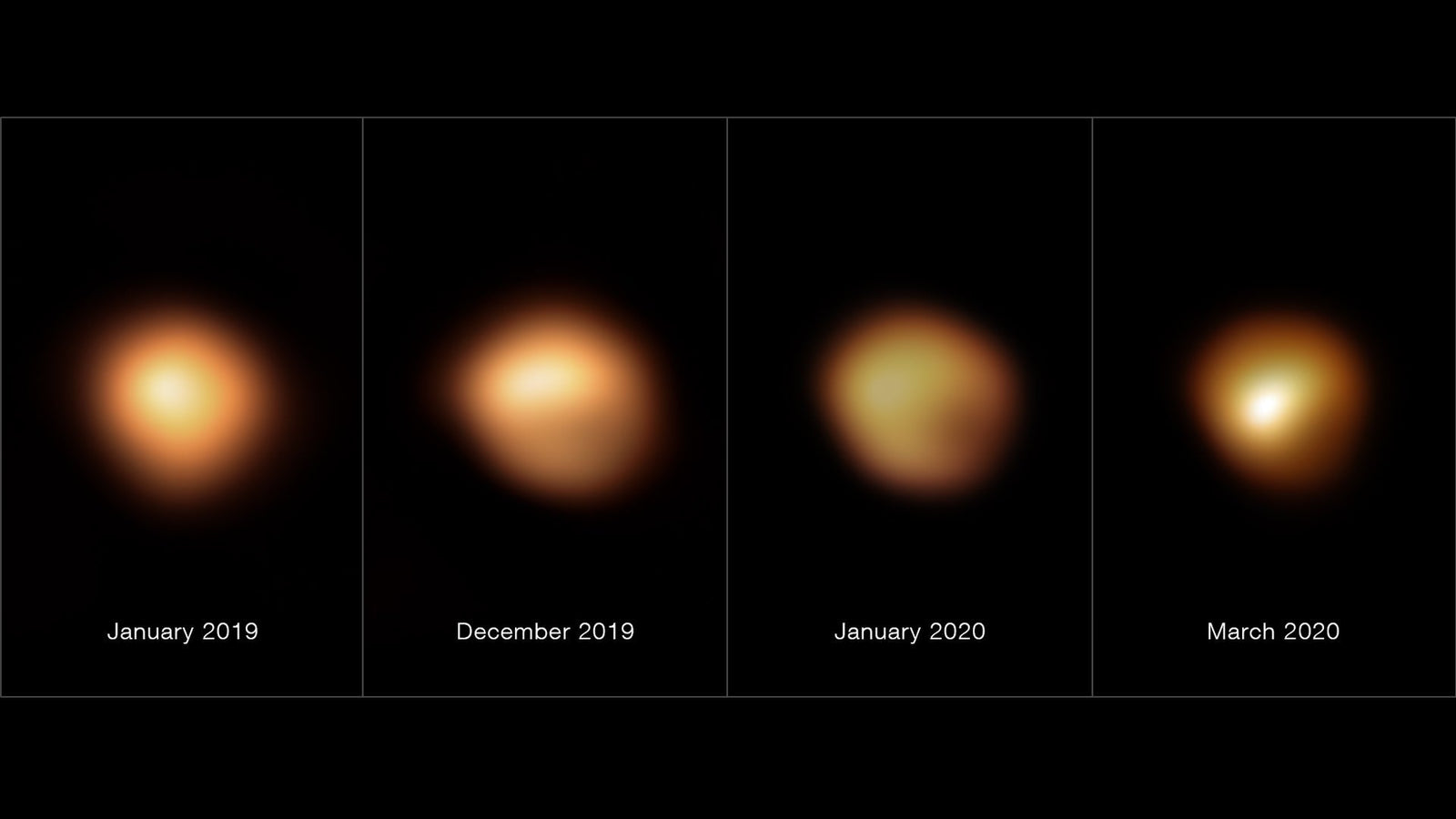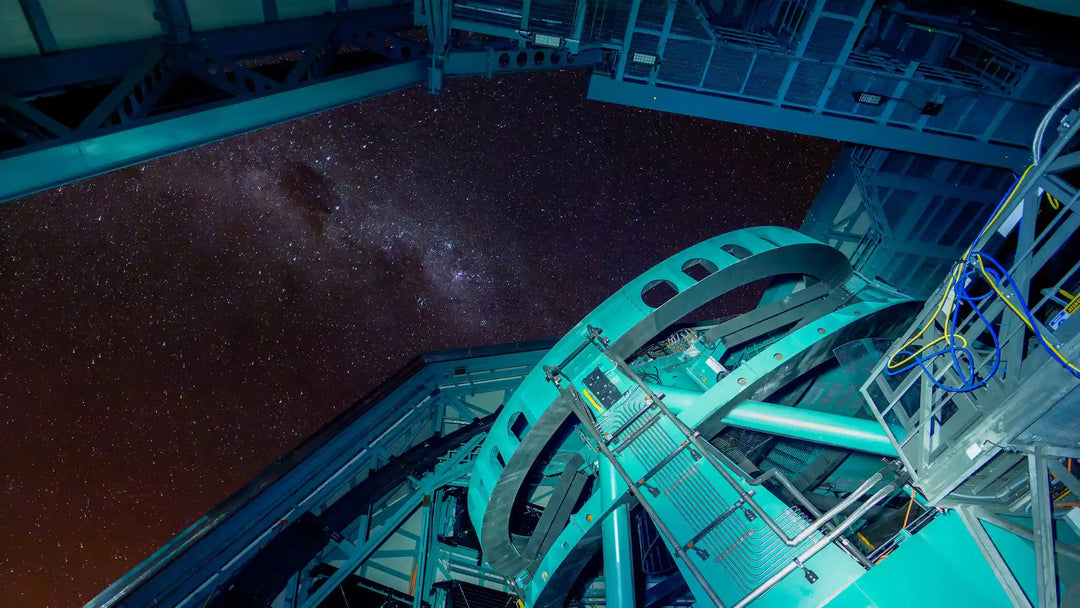Is Betelgeuse a Cosmic Time Bomb? Maybe we will anticipate in the celestial show

Recent studies suggest that Betelgeuse, the intriguing star gracing the Orion constellation, may be closer to a remarkable explosion than we thought. While we await confirmation, astronomers are closely monitoring Betelgeuse's behavior, observing intriguing signs that point toward an impending supernova.
What is Betelgeuse? Unraveling the mysteries of a celestial giant
Betelgeuse star has intrigued scientists for ages, and it's time to shed some light on its captivating nature. Located approximately 650 light-years away from Earth, Betelgeuse proudly graces the night sky as one of the brightest stars in our cosmic neighborhood. Positioned as the left shoulder of the renowned Orion constellation, it demands our attention and curiosity.
What makes Betelgeuse so special?
Well, it's not just its brightness that sets it apart. This celestial entity belongs to a category known as red giants, which are stars in the advanced stages of their life cycles. These stars ignite our imagination because they often raise speculations about potential supernova events.
Betelgeuse, also known as Alpha Orionis, boasts an impressive size, making it one of the largest stars ever observed by astronomers.
To put things into perspective, if this star were placed at the center of our solar system, it would stretch beyond the orbit of Jupiter. That's mind-blowing!

Read more:
- The Earthrise Photo: A Journey Through Earth’s Iconic Space Portrait
- William Bill Anders Tribute: Astronaut, Earthrise Photographer, Aviator
Pale Blue Dot Image: What About Large Format Prints like Fine Art?
James Webb Space Telescope uncovers young stars in NGC 346’s dusty ribbons
JADES-GS-z14-0: NASA's JWST Discovering the Most Distant Galaxy
Hubble Telescope Captures a Stellar Trio: The Dawn of a Sun-like Star
Enceladus holds potential for alien life with recent discovery of vital element
Supernova 2020eyj: First radio signal from the massive explosion of a dying white dwarf
Betelguese: a young star with an explosive destiny
Despite its immense proportions, Betelgeuse is relatively young, just a mere 10 million years old. But don't let its age fool you — it has already run out of its hydrogen fuel and is currently engaged in the process of fusing helium into carbon.
This accelerated life cycle can be attributed to Betelgeuse's initial massive nature. Scientists suspect that in its prime, this star was tens of times more massive than our own sun, radiating with intense luminosity and blazing temperatures reaching a scorching 89,500 degrees Fahrenheit (50,000 degrees Celsius). In comparison, our sun seems lukewarm at a "mere" 10,000 degrees F (5,500 degrees C).
With its hydrogen reserves exhausted, Betelgeuse has expanded dramatically, becoming one of the largest known stars. Its immense size enables us to study it in greater detail, using telescopes like the Hubble Space Telescope and radio telescopes to unveil its fascinating secrets.
Observations of Betelgeuse have revealed a captivating spectacle. Unlike our sun's smooth and uniform appearance, Betelgeuse presents itself as a textured and turbulent cosmic body. It features bubbling gas bubbles, some as large as small stars, rising from its core to the surface and then fading away into the depths once more. It's like the sun's solar cycle on a cosmic dose of adrenaline.
Check also:
Betelguese's brightness: signs pointing to an impending supernova
In the past few years, this star has kept astronomers on their toes. Its brightness has shown unusual fluctuations, captivating skywatchers worldwide. In December 2019, it startled us by dimming 2.5 times more than ever recorded. Scientists later traced this event to an immense release of material from the star's interior, resulting in a massive dust cloud that momentarily obscured our view.
Since then, Betelgeuse has returned to its former brightness, but it has exhibited some intriguing changes. Its typical 400-day brightness oscillation period has halved to just 200 days, and in the spring of 2023, the star started shining brighter than ever before. These peculiar behaviors have sparked speculation that Betelgeuse might be on the brink of a supernova explosion.
Supernovae represent the grand finale of massive stars. As red giants exhaust their helium reserves, they begin fusing heavier elements until their cores fill with iron. At this critical point, a cascade of events leads to a core-collapse supernova, resulting in an explosion that briefly outshines entire galaxies.
A glimpse of the supernova
Now, here's the thrilling part. Due to Betelgeuse's relatively close proximity to Earth, a Betelgeuse supernova would be a rare treat, visible even during daylight hours.
Imagine the sky illuminated by a star shining as brightly as the full moon, condensed into a single, mesmerizing point of light. For approximately two months, the supernova's radiance would be so intense that, on a clear night, you could even read a book under its otherworldly glow, with all city lights switched off.
When will Betelguese explode?
But let's not get too carried away just yet. While the prospect of witnessing such an astronomical spectacle is undeniably thrilling, astronomers caution us to exercise patience. Betelgeuse is still in its early red giant phase.
Some voices say the event may occur in our lifetime. But it might be as well even tens of thousands of years left before its eventual explosive fate will be fulfilled.
References:
- Betelgeuse, https://www.britannica.com/place/Betelgeuse-star, [17.04.2024]
- Betelgeuse is dimming again. When will it explode?, https://earthsky.org/brightest-stars/betelgeuse-will-explode-someday/, [17.04.2024]
- NASA JPL, Meet the Workaholic Star, Betelgeuse, https://nightsky.jpl.nasa.gov/news-display.cfm?News_ID=560, [17.04.2024]
- Gohd Ch, What is Betelgeuse? Inside the Strange, Volatile Star, https://science.nasa.gov/universe/what-is-betelgeuse-inside-the-strange-volatile-star/, [17.04.2024]
- Pultarova T, Betelgeuse: A guide to the giant star sparking supernova hopes, https://www.space.com/22009-betelgeuse.html [17.04.2024]


![Vera C. Rubin Observatory: Revolutionizing Astronomy Through the World's Most Advanced Telescope [All You Need To Know]](http://astrography.com/cdn/shop/articles/vera-c.-rubin-observatory_main.webp?v=1751627507&width=1080)

Leave a comment